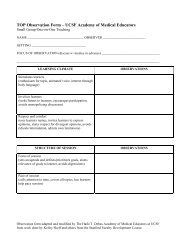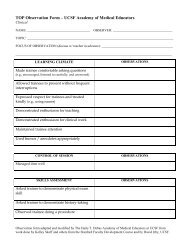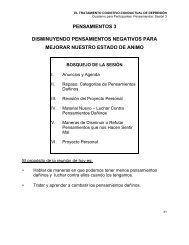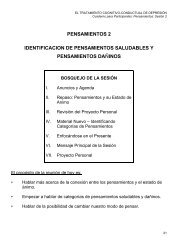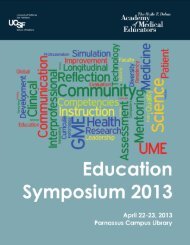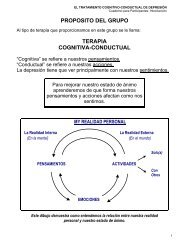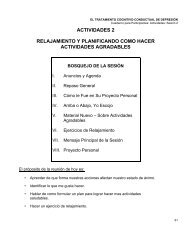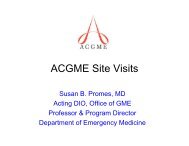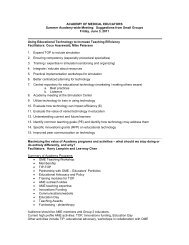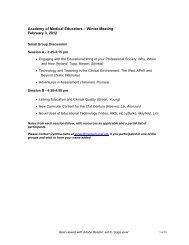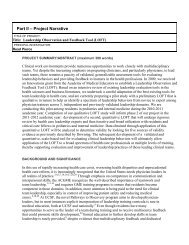2011 - UCSF School of Medicine - University of California, San ...
2011 - UCSF School of Medicine - University of California, San ...
2011 - UCSF School of Medicine - University of California, San ...
Create successful ePaper yourself
Turn your PDF publications into a flip-book with our unique Google optimized e-Paper software.
<strong>UCSF</strong> Education Day <strong>2011</strong>Reflective critique: This program may serve as a modelthat informs broader integration <strong>of</strong> multidisciplinaryclinical experience at <strong>UCSF</strong>.Diabetes, Hypertension andAsthma…Oh My! Can a ChronicIllness Cohort Help Improve Studentand Patient Outcomes?Margo Vener, MD, MPH, <strong>UCSF</strong>, mvener@fcm.ucsf.edu;Ben Howell, MS 3, <strong>UCSF</strong>, ben.howell@ucsf.edu; NicoleGomez, MS 3, <strong>UCSF</strong>, nicole.gomez@ucsf.edu; KateChomsky-Higgins, MS 3, <strong>UCSF</strong>,Kate.chomskyhiggins@ucsf.edu; Nili Sommavilla, MS 3,<strong>UCSF</strong>, nili.sommavilla@ucsf.edu; Margaret Wheeler,MD, <strong>UCSF</strong>, mwheeler@medsfgh.ucsf.eduAreas abstract covers: UMEDomain(s) addressed: Communication, LongitudinalEducational Activities, Patient Care, Primary CarePurpose: To evaluate whether our 3rd-year chronicillness curriculum improved: 1) students’ understanding<strong>of</strong> chronic illness and management and/or 2) clinicaloutcomes for chronically ill patientsBackground: To care for an aging population, futurephysicians need skills to optimize chronic illnessmanagement (1,2). We designed an innovativecurriculum to improve 3rd-year students’ ability toprovide chronic illness care. Students developed theirown panel <strong>of</strong> chronically ill patients. They performedstructured visits emphasizing understanding the patient’sgoals, self-management, education, and prevention.Methods: Twenty-five students each followed at leastpatients for six months. Using student reports, wetracked patient metrics (blood pressure, glucose, etc)and behavior changes (starting exercise, etc). We als<strong>of</strong>ollowed patient educational outcomes. We assessed theeducational impact to medical students through Likkertsurveys and focus groups.Results: While the average patient did not showsignificant change in blood pressure, etc, selectedpatients demonstrated very impressive changes (eg: 20lb intentional weight loss). Both students and patientsfound these changes highly inspirational. Students alsoreported greater appreciation <strong>of</strong>: 1) the ups and downs<strong>of</strong> chronic illness management; 2) the importance <strong>of</strong>continuity: 3) the value and challenge <strong>of</strong> patienteducation and prevention 4) the need not to stereotypepatients 5) the importance <strong>of</strong> follow up outside <strong>of</strong>ficevisits 6) the importance <strong>of</strong> hope.Discussion: Although chronic care was not optimizedfor all participating patients, helping even one patient intheir panel make substantial health gains had markedimpact on students’ understanding <strong>of</strong> chronic illness andtheir belief that they could improve health outcomes theirpatients.Reflective critique: We plan to present this at WGEAfor feedback. Future efforts will focus on how to extendthis curriculum to third-year students in other longitudinaland block rotations.References:1. Pols, Chronic Illness, 2009.2. Holman, JAMA, 2004.Dissemination and Implementation <strong>of</strong>an Evidence-Based, Tobacco-Treatment CurriculumAlan K. Louie, MD, <strong>UCSF</strong>, alanlouie@lppi.ucsf.edu;Sebastien C. Fromont, MD, <strong>UCSF</strong>,SCFromont@hotmail.com; Karen Suchanek Hudmon,DrPH, RPH, <strong>UCSF</strong>, hudmonk@pharmacy.ucsf.edu;Sharon M. Hall, PhD, <strong>UCSF</strong>, Sharon.Hall@ucsf.edu;Judith Prochaska, PhD, MPH, <strong>UCSF</strong>,JProchaska@ucsf.eduAreas abstract covers: UME, GMEDomain(s) addressed: Evaluation <strong>of</strong> Programs andCurricula, Faculty Development, Interpr<strong>of</strong>essionalEducation, ResidencyPurpose: The goal <strong>of</strong> the current study was to improvecompetency in tobacco-treatment by psychiatrictrainees. The objective was to evaluate thedissemination and implementation phase <strong>of</strong> PsychiatryRx for Change, a 4-hour, tobacco-treatment curriculumfor psychiatric residencies and graduate psychiatricnursing programs.Background: Nearly half <strong>of</strong> cigarettes sold in the U.S.are smoked by people with mental illness and substanceuse disorders. Yet, surveys suggest psychiatrists rarelytreat tobacco use and only half <strong>of</strong> psychiatric residencyprograms provide didactics on such treatment, with amedian length <strong>of</strong> 1 hour (Prochaska et al., 2006). Wedeveloped the Psychiatry Rx for Change curriculum toaddress this gap and demonstrated positive educationaloutcomes sustained at 3-months follow-up with 55psychiatric residents (Prochaska et al, 2008). Diffusion<strong>of</strong> Innovations theory (Roger 1995) and the RE-AIMframework (Glasgow & Emmons, 2007) guideddissemination and implementation.Methods: Faculty from psychiatric residencies (n=28)and graduate psychiatric nursing programs (n=15) fromthe Western U.S. attended a one-day Psychiatry Rx for28 The Haile T. Debas Academy <strong>of</strong> Medical Educators



